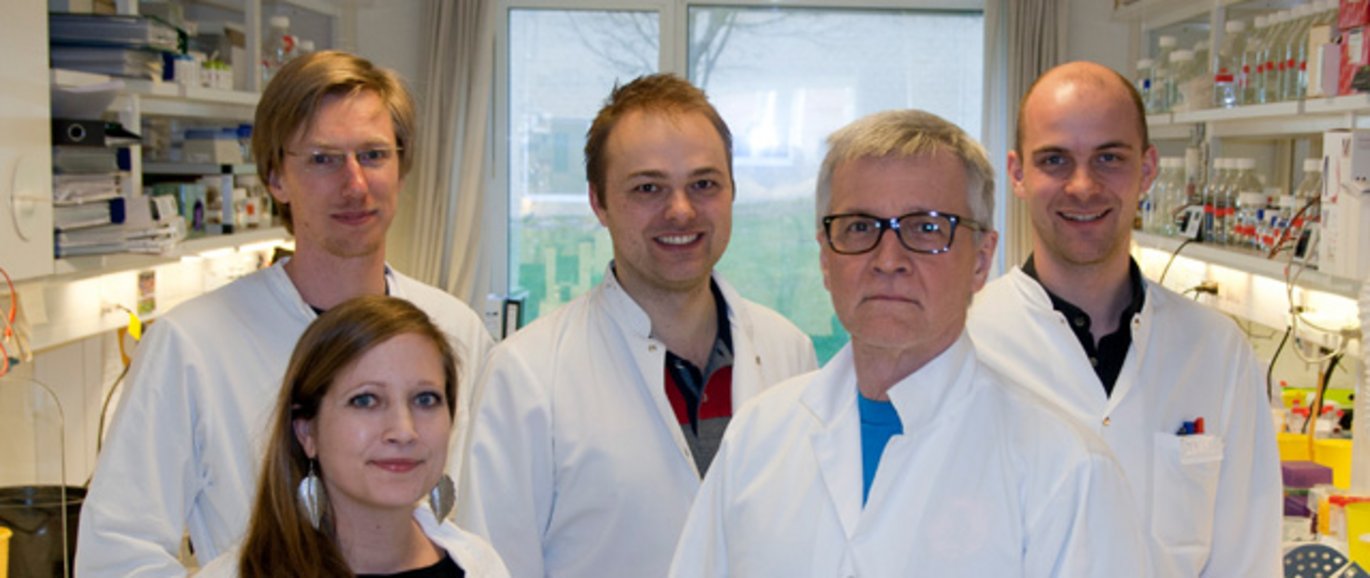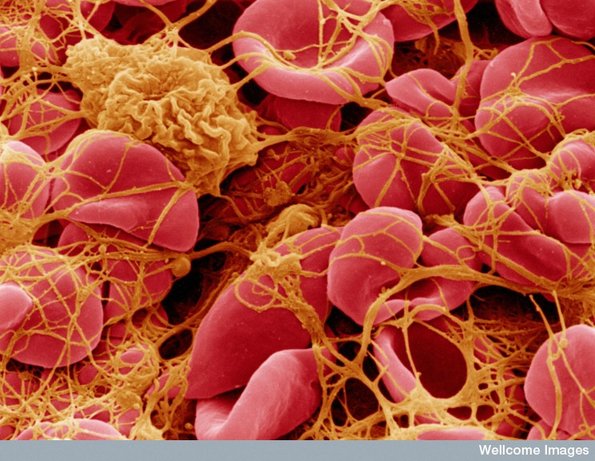Researchers study the secrets of blood
The factors controlling blood coagulation have been known for a long time. New research shows that the last factor – Factor XIII, which stabilises the healing process – plays a much more complicated role than previously thought.


One of the most important defence mechanisms in the body is that, if it is punctured, it can get some of the blood to clump together in the wound and coagulate, thus preventing further blood loss. In a way, coagulation is nature’s own plaster.
However, the plaster must be both durable and easy to break down.
When we cut a finger, for example, the plaster – i.e. the clump of blood and finally the scab – should preferably be formed quickly and be so solid that no further bleeding occurs before the underlying tissue is healed.
However, if tissue or vessels inside the body are punctured – as in a sprain or bruise, for example – the clumps of blood need to be broken down again rapidly so they do not form blood clots.
Vital balance
The body’s defence against lesions must in other words be precisely balanced to efficiently stop the bleeding without being all too efficient – and not attempt to stop bleeding that does not exist.
This mechanism is out of balance in many people. Some people’s blood coagulates a little too zealously, or their system for breaking down the clumps of blood does not work well enough – blood clots are one of the most common causes of death in the world. Others have the opposite problem – their blood has difficulty coagulating.
In Denmark alone, approximately 1000 people have been diagnosed with a bleeding disorder such as haemophilia, while a far greater number are thought to have the most common type – von Willebrand disease – without even knowing it.
Research is therefore being carried out at institutions all over the world into the many different factors and processes involved in coagulation.
Blood analysis
The Department of Molecular Biology and Genetics (MBG) at Aarhus University is one such institution. A team of researchers here used ultra-modern equipment for the separation, protein analysis and mass spectroscopy of blood, and determined the role played by the final factor in coagulation.
It is called Factor XIII, and the results from Aarhus show that Factor XIII is far more versatile that assumed when it was given its name in 1963.
There is much to indicate that it interacts with the rest of the body’s immune system and the formation of connective tissue.
The results have been published in the American publication the Journal of Biological Chemistry.
Factor XIII is capable of much more –
However, the results from Aarhus raise new questions.
The research project involved mapping which proteins are influenced by (act as substrates for) the enzyme Factor XIII – a field that MBG has previously contributed to.
Until now, 20 such substrates were known in the blood. The new study revealed a further 132 substrates that have never previously been described.
This means there is now a total of 152 proteins – but only 48 of them were incorporated in fibrin during the coagulation process. The remaining 99 do not immediately appear to have anything to do with coagulation. Not directly, in any case.
– but what and how?
“We’ve found that Factor XIII has a much wider function than just stabilising fibrin. We know that these identified substrates have functions in the coagulation system, the immune system, the inflammatory system and connective tissue formation. It appears that the coagulation process interacts with the immune system so that Factor XIII takes some proteins from the immune system and stabilises them in a scab by means of cross-linking mediated by Factor XIII. But we don’t yet know why,” explains Camilla Lund Nikolajsen, a PhD student at MBG and first author of the scientific article.
She emphasises that the new results do not in themselves provide the key to preventing blood clots or producing better medicine for haemophiliacs.
“Our results can guide future research in the field of coagulation, so as to gain a better understanding of the role of Factor XIII in coagulation. In the long run, this could lead to improved treatment of Factor XIII deficiency and not least better medical treatment of blood clots,” she says.
Link to the scientific article in the American Journal of Biological Chemistry:
Coagulation Factor XIIIa Substrates in Human Plasma. Identification and Incorporation Into the Clot
Contact
PhD student Camilla Lund Nikolajsen
Department of Molecular Biology and Genetics/iNANO
Aarhus Unversity, Denmark
email: camillan@mb.au.dk - +45 87154932
